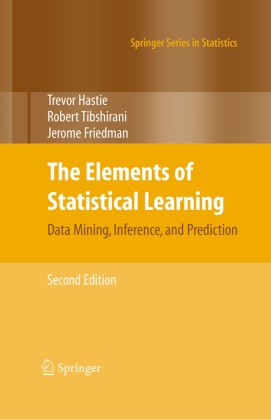
The Elements of Statistical Learning - Data Mining, Inference, and Prediction
| Verlag | Springer |
| Auflage | 2009 |
| Seiten | 745 |
| Format | 15,6 x 3,6 x 24,4 cm |
| Gewicht | 1194 g |
| Artikeltyp | Englisches Buch |
| Reihe | Springer Series in Statistics |
| ISBN-10 | 0387848576 |
| EAN | 9780387848570 |
| Bestell-Nr | 38784857EA |
This major new edition features many topics not covered in the original, including graphical models, random forests, and ensemble methods. As before, it covers the conceptual framework for statistical data in our rapidly expanding computerized world.
This book describes the important ideas in a variety of fields such as medicine, biology, finance, and marketing in a common conceptual framework. While the approach is statistical, the emphasis is on concepts rather than mathematics. Many examples are given, with a liberal use of colour graphics. It is a valuable resource for statisticians and anyone interested in data mining in science or industry. The book's coverage is broad, from supervised learning (prediction) to unsupervised learning. The many topics include neural networks, support vector machines, classification trees and boosting---the first comprehensive treatment of this topic in any book.
This major new edition features many topics not covered in the original, including graphical models, random forests, ensemble methods, least angle regression & path algorithms for the lasso, non-negative matrix factorisation, and spectral clustering. There is also a chapter on methods for "wide'' data (p bigger than n), including multiple testing and false discovery rates.
Inhaltsverzeichnis:
Overview of Supervised Learning.- Linear Methods for Regression.- Linear Methods for Classification.- Basis Expansions and Regularization.- Kernel Smoothing Methods.- Model Assessment and Selection.- Model Inference and Averaging.- Additive Models, Trees, and Related Methods.- Boosting and Additive Trees.- Neural Networks.- Support Vector Machines and Flexible Discriminants.- Prototype Methods and Nearest-Neighbors.- Unsupervised Learning.- Random Forests.- Ensemble Learning.- Undirected Graphical Models.- High-Dimensional Problems: p ? N.
